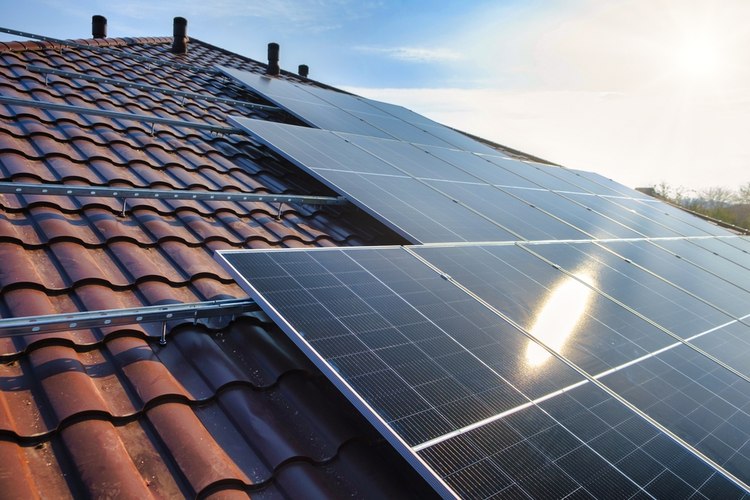Solar Roof Guide: Solar Tiles, Panels and Home Energy
A solar roof transforms a regular rooftop into a power-generating surface, blending aesthetics with function. Homeowners considering this upgrade should understand how solar tiles and panels differ, what a solar roof means for the structure of your house, and the practical benefits of switching to solar energy. This guide breaks down the essentials—how the technology works, installation and maintenance realities, and what homeowners can reasonably expect from a modern solar roof system.

What are solar tiles and how do they work?
Solar tiles (sometimes called solar shingles) are building-integrated photovoltaic (BIPV) products designed to replace conventional roofing materials while generating electricity. Unlike rack-mounted solar panels, solar tiles sit flush with roof surfaces and can closely match the look of asphalt, slate, or metal roofs. They contain photovoltaic cells that convert sunlight into DC electricity, which an inverter then changes into AC power for household use. Solar tiles are ideal for homeowners prioritizing curb appeal and a seamless roofline, though performance and cost per watt can vary with product design and installation complexity.
How does a solar roof differ from a regular roof?
A solar roof combines weatherproofing and energy generation in one system, so its design priorities include durability, water resistance, and electrical integration. Traditional roofs focus primarily on protection and insulation; a solar roof must also accommodate wiring, inverters, and sometimes integrated monitoring systems. Installing a solar roof often requires careful coordination between roofing and electrical trades to maintain warranty coverage and ensure proper flashing, underlayment, and ventilation. For existing roofs near the end of their lifespan, replacing the roof and adding solar at once can be more efficient than retrofitting later.
How effective are solar panels today?
Solar panels remain the most common and mature way to harvest solar energy for homes. Modern panels convert a larger share of sunlight into electricity than older models, with typical residential module efficiencies ranging from mid-teens to the low twenties percent depending on technology. Performance depends on orientation, tilt, shading, and local climate. Panels are modular and flexible in sizing, which makes them suitable for most rooftops and arrays. For many households, a well-designed solar panel array will supply a significant portion of annual electricity needs, reduce grid reliance, and pair effectively with battery storage or smart home systems.
How will a solar roof affect my house value?
Adding solar capability can influence a house’s market appeal and perceived value, particularly for buyers interested in lower utility costs and energy independence. Studies generally show positive effects on resale value for homes with documented solar installations in good condition, but impacts vary by region, local electricity prices, and the type of solar system (owned vs. leased). A professionally installed solar roof with clear warranties, accessible documentation, and proper permitting will typically be more attractive than an ad-hoc or poorly maintained setup. Always consider local market dynamics and consult real estate professionals for a precise valuation estimate.
What are the benefits of using solar energy?
Solar energy provides several tangible benefits: it reduces dependence on fossil fuels, lowers ongoing electricity bills, and can decrease a household’s carbon footprint. Solar systems also offer resilience when paired with batteries, enabling backup power during grid outages. For many homeowners, long-term savings and predictable energy costs are strong incentives, along with potential incentives or tax credits available in some jurisdictions. Non-economic benefits include quieter operation than generators and the opportunity to participate in community or grid-support programs such as net metering where available.
What maintenance and installation considerations matter?
Proper installation and ongoing maintenance are key to getting the most from a solar roof. During installation, ensure licensed professionals handle electrical connections, roof penetrations, and warranty compliance. Maintenance is typically low: periodic cleaning in dusty or pollen-prone areas, visual inspections for debris or damage, and monitoring system output to catch performance drops early. Snow, shade, or heavy foliage can affect yields and may necessitate occasional trimming or roof work. Keep documentation, inverter manuals, and warranty information accessible to simplify future service or transfers during a home sale.
A solar roof can be an elegant and practical way to integrate renewable energy into a home, offering both visual integration and long-term energy benefits. Choosing between solar tiles and conventional panels depends on priorities—appearance, budget, roof condition, and desired performance. With careful planning, professional installation, and routine upkeep, a solar roof or panel system can serve as a durable, low-maintenance energy solution that aligns with modern sustainability goals.






